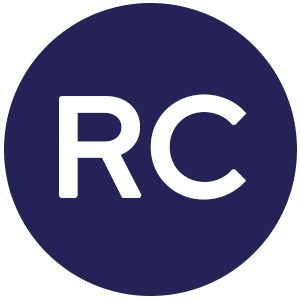American hospitals lose millions of dollars each year because of stolen, lost, and misplaced equipment. This reality is not only costly but also impacts patient care as staff are spending too much time searching for equipment.
In this post, you’ll learn more about the four reasons why hospital equipment goes missing and how real-time location system (RTLS) technology can be a vital tool in preventing such expensive losses.
SEE ALSO: How to transform RTLS data into hard dollar savings for your hospital
Reason 1: Deliberate Theft Within Healthcare Organizations
It’s an unpleasant truth: there’s a thriving market for stolen medical equipment. There are numerous examples of hospital employees and other healthcare professionals stealing medical equipment or supplies that they can turn around and sell on the internet for a tidy profit. Sometimes professional thieves go to great lengths to infiltrate hospitals and steal equipment.
Most hospitals can’t, and often don’t, do much to stop this activity. These facilities have upward of 20 different entrance and exit points, many of which are configured to be welcoming and attractive to patients and visitors. Unlike a retail store, a hospital wouldn’t lock their doors or trigger lights and sirens to call attention to a thief. In fact, the type of loss that occurs from hospital theft is usually not recouped.
Reason 2: Patient Flow and Accidental Theft
Patients occasionally walk out with hospital equipment after they get discharged. Sometimes this is by true accident (a small item dropped in a purse) or by misunderstanding as the patient assumes the equipment is now theirs.
RTLS can help address this kind of theft. Let’s say the hospital knows that Mrs. Smith was discharged at 4 p.m., two days ago and, at around the same time, a sequential compression device went missing.
By looking at the history of the device, the hospital sees that it was in the same room with Mrs. Smith for two days, during which she had compression therapy. The hospital then has the opportunity to call Mrs. Smith about the device and arrange for its return.
SEE ALSO: How RTLS technology can help improve the patient experience at your hospital
Reason 3: Disposal With Trash Or Soiled Linen
Many expensive medical devices, such as pulse oximeters are small and easily misplaced in a patient room. When the patient is discharged, staff are expected to turn the room quickly, changing the bedding and rolling up linens before throwing them into a cart for delivery into a soiled laundry holding room or down a chute. Similarly, small pieces of hospital equipment can find their way into biohazard bags and whisked off to a dumpster. Without being able to see or feel the piece of medical equipment in a trash bag, it’s practically impossible to recover the item before bag is picked up and taken off site for destruction.
In these situations, time is short and hospitals must respond quickly. RTLS can help by monitoring disposal areas – whether they’re floor-level holding rooms or main laundry and trash collection areas. When an item containing an RTLS tag crosses into one of these areas, the system will send an alert to enrolled staff members’ phones, giving them a chance to retrieve the medical equipment before laundry or trash bags are hauled away.
SEE ALSO: How Real-Time Visibility Can Optimize Hospital Cleaning Workflows
Reason 4: Misplaced Or Hoarded Medical Equipment
Misplaced hospital equipment doesn’t have the same hard-dollar financial impact that lost or stolen equipment does, but it’s a problem that must be addressed. First, if a hospital owns medical equipment that it’s not using, that equipment can’t provide value for the hospital, its staff, or its patients.
Second, every piece of hospital equipment needs to receive maintenance at least once per year, more often when considering recalls, software updates and critical service items. For misplaced medical devices, a mandated manufacturer provided software update may be missed and the device fails to meet current standards. In each case, misplaced medical equipment has a cost in terms of resource availability and efficiency – which makes an indirect impact on a hospital’s bottom line.
A factor in misplaced hospital equipment is deliberate equipment hoarding. When hospital staff lacks confidence in the availability of clean equipment when its needed, the temptation is to stash pieces of equipment in or near their stations to ensure they have one available at all times. An effective RTLS system returns their confidence to asset availability and instantly pinpoints a piece of equipment to it’s exact location should it be unavailable.
SEE ALSO: Want to optimize your PAR levels? Get the fix for efficient hospital asset management
Why Should Healthcare Facilities Choose an RTLS solution?
There are many companies that can provide asset tracking for hospitals to prevent lost and misplaced equipment – but, too often, the high costs and significant operational disruptions caused by lengthy and challenging deployments make moving forward with installation unpalatable.
With RTLS from Cognosos, you can get enterprise-wide asset tracking up and running in weeks, without disruption to clinical operations or needing to install infrastructure in patient rooms.
Our A.I.-powered real-time location technology has an ultra-lightweight footprint, meaning it’s quick to implement with lower up-front costs while still providing room-level accuracy.
The result: patient satisfaction, less wasted time for staff, and – most importantly – a significant return on investment.
To learn more about real-time visibility and choosing the right RTLS for your hospital, get our in-depth guide now.




